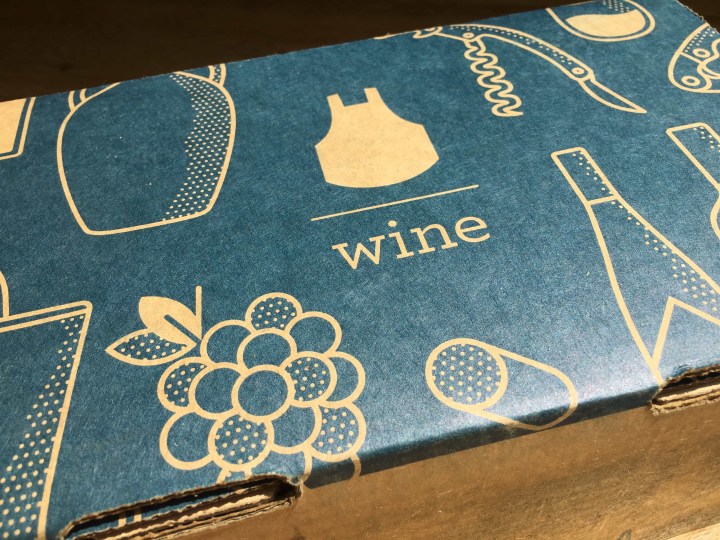
Blue Apron Wine is a subscription for people who love trying new wines as much as they love great food. You may be familiar with the Blue Apron Meal Delivery Kit subscription, which sends boxes of fresh ingredients to make exciting meals at home. The wine subscription is separate from the meal subscription, but it’s designed to complement it.
Here’s how it works: every month, for about $11 per bottle ($65.99/month, including shipping and tax), Blue Apron sends you 6 bottles of wine, plus tasting notes and pairing recommendations. The wines are selected to pair perfectly with the meals in the Blue Apron kits. The bottles are 500 ml, or 2/3 the size of a standard bottle, which, in addition to being adorable, means that you and your dining partner can enjoy your entire bottle with your meal without regretting that additional glass needed to finish a standard-sized bottle.
Blue Apron pairs with wineries around the world to bring a wide range of new and interesting wines to you each month. I love wine, and I love food, and I love everything about the idea of this subscription.
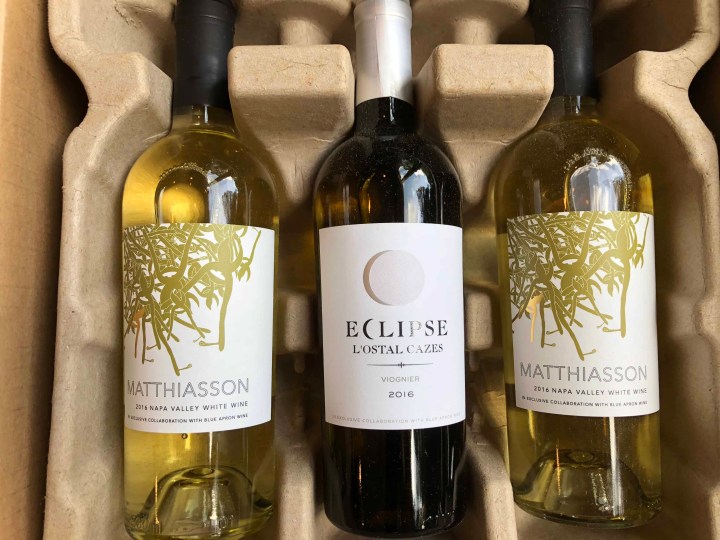
The new packaging is great and keeps everything snug and secure. Keep in mind that someone 21+ will need to sign for it. Everything is in great shape when it arrives, and the packaging remains, happily, recyclable cardboard.
Blue Apron Wine allows you to select your wines–you can go all white, red, or mix it up. There are lots of choices, and it’s easy to change it up. Notice anything funny about the above picture? Yep, I accidentally got two of the same wine instead of the Blue Quail riesling I ordered. The good news is that the Matthiasson white is awesome, so I don’t mind having two bottles!
DEAL: You can try out your first box of Blue Apron dinners for $30 off with this link.
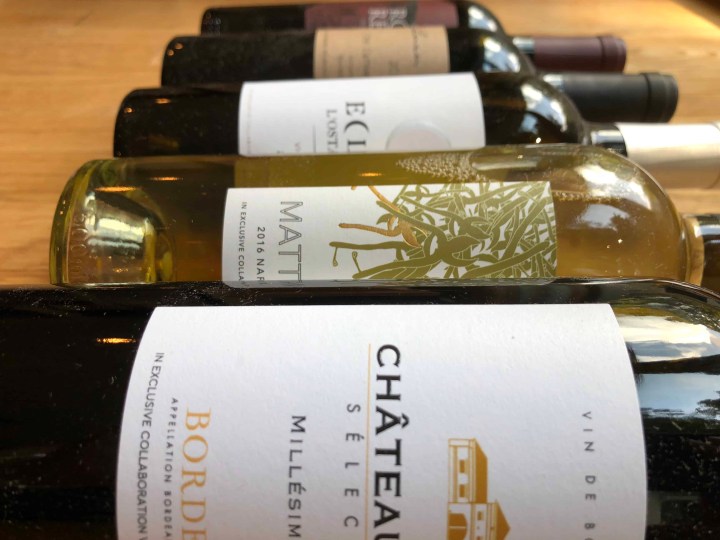
If you’re wondering what a 2/3-sized bottle looks like, here is one of the bottles with a standard-sized bottle next to it. You’ll get about 3 1/2 standard glasses in a bottle, or a generous pour plus a top-off each if you’re with a partner.
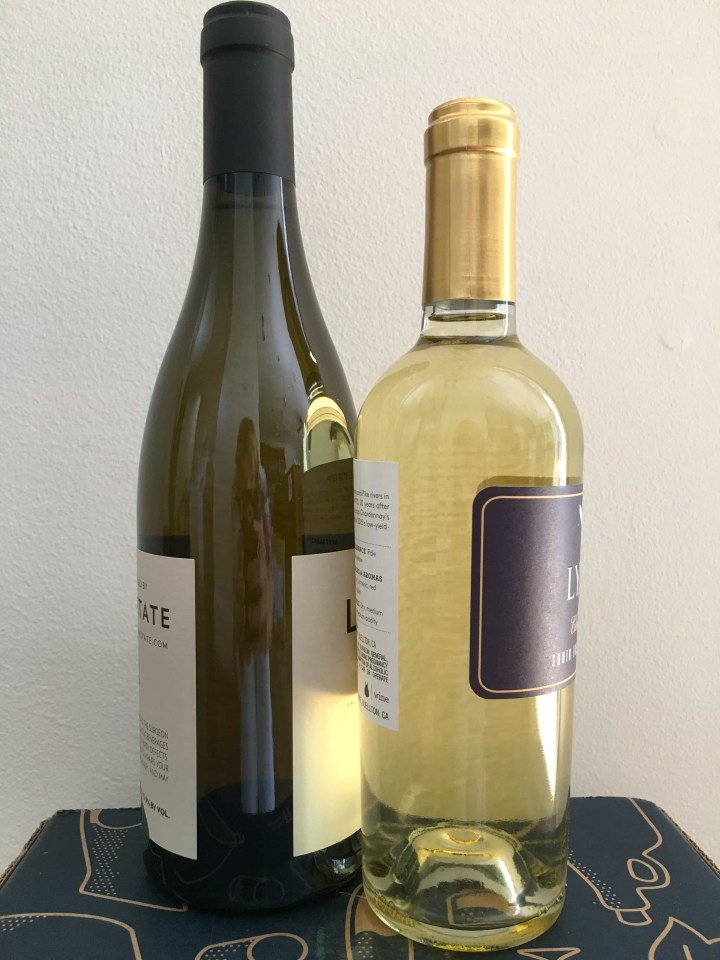
Each box comes with a great collection of tasting notes. Blue Apron tells you a little bit about the winery and how the bottle was made, plus the region at large. Because come on, you didn’t REALLY know where the Central Coast was, did you? The info details the color, body, and structure of the wine, and also gives some thoughtful food pairings for each bottle. The info is terrific – wine is not scary, and tasting it should be fun and informative. Data is your friend.
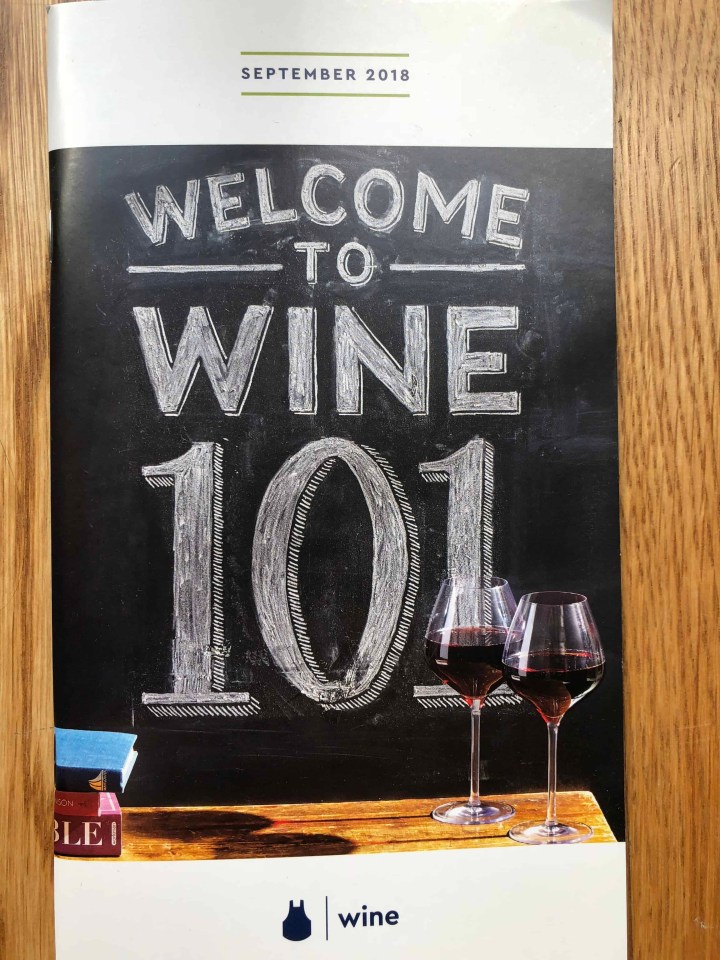
It’s September! Back-to-school time for those lucky chaps with post-Labor Day starts; around here, we’ve been back to school for a month. But I don’t hold it against you, BA, and I appreciate the seasonal play with the Wine 101-themed catalog. I love learning things! Especially when I can drink those things. Three whites and three reds (goodbye, summer rosé) this month.
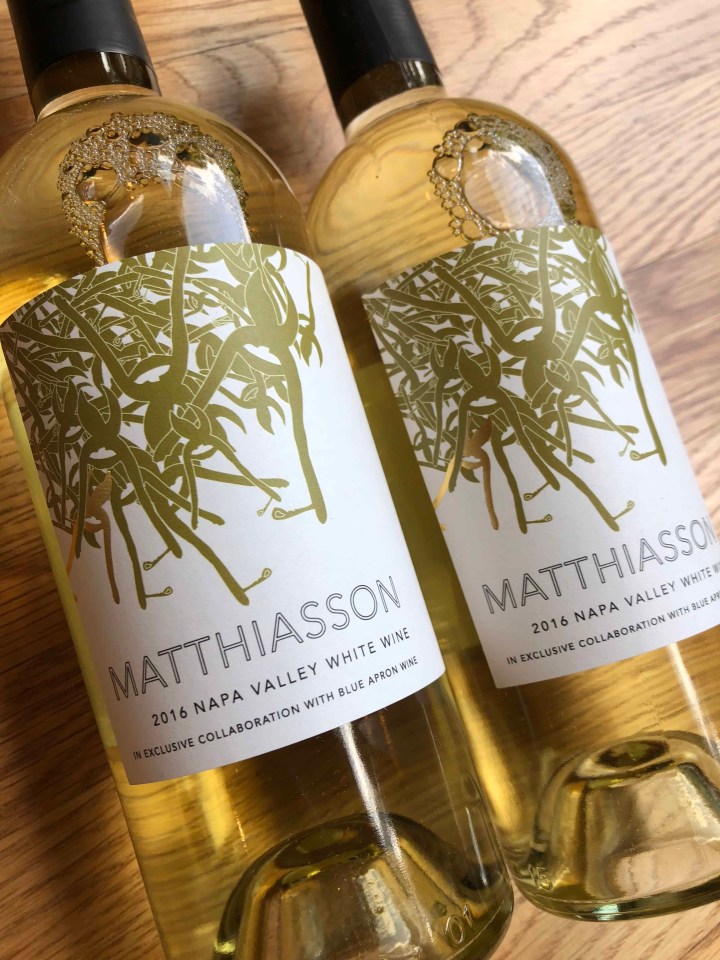
First up is my accidental double dose of the 2016 Matthiasson White Blend. As I said above, BA accidentally sent me a duplicate bottle of this instead of the riesling I had selected. More to share! I’ve actually reviewed this bottle before, back in April, but I was so excited to see it again in my selections that I ordered it again. I promise that I did not order two!
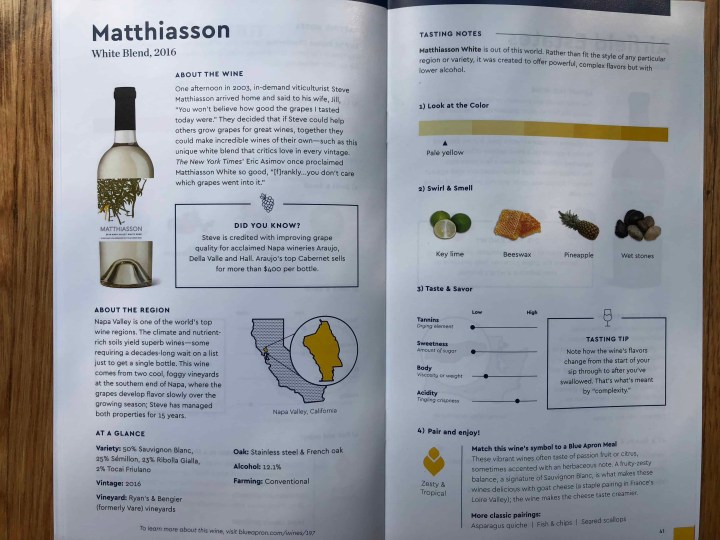
As I said in April, this is one of those “exclusive collaboration” bottlings that you won’t be able to find on the shelves, but similar full-sized bottles will set you back $30 or more. The 2016 blend is 50% Sauvignon Blanc, about 23% each of Semillion and Ribolla Gialta, and a splash of Tocai Friulano for minerality. It is a pale straw color in the glass, with a light body, and a strong nose of citrus and mineral. The flavor is initially of fruit–citrus with an undercurrent of sweetness, and then the sweetness drops out completely to a long and dry finish of stone/ozone. Everything about this is perfectly balanced and exactly what I want in a relaxed white blend. We had this with Greek chicken grain bowls, and the flavors complemented each other beautifully. Drink this cool but not cold.

Our second white takes us to Southern France for the 2016 L’Ostal Cazes Eclipse Viognier. Viognier is a funny grape that can lean floral and fruity or more like an oaky Chardonnay. This version is unoaked, and definitely of the lighter variety.
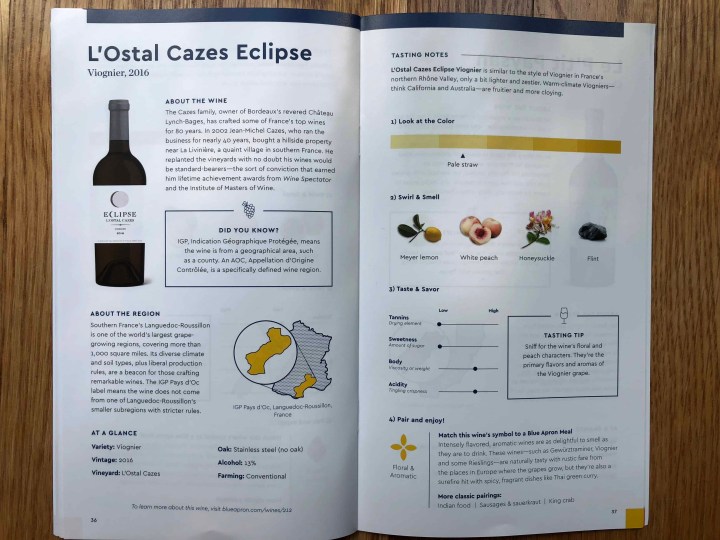
The Eclipse (which you can buy fairly widely for about $13-15 a bottle) is light yellow in the glass with the typical heavier body of a Viognier. It has a huge nose of flowers and peach, and those flavors lead, but they drop off into a sharp finish of citrus and stone that is tremendously refreshing. This is a really nice wine! Your Sauvignon Blanc-loving friends will enjoy this, but so will fans of the Rhine-style German wines. We had this with shrimp and grits, and the acidity cut through the creamy flavors of the dish nicely. Cool but not cold here.
Onward to red wine! All of the selections this month are lighter in alcohol than many (mostly Californian) reds, which makes it easy to pair them with food. It also means you can have that extra glass without getting sloppy. Our first red is a Bordeaux, the delicious and easy to drink 2015 Chateau Pilet.
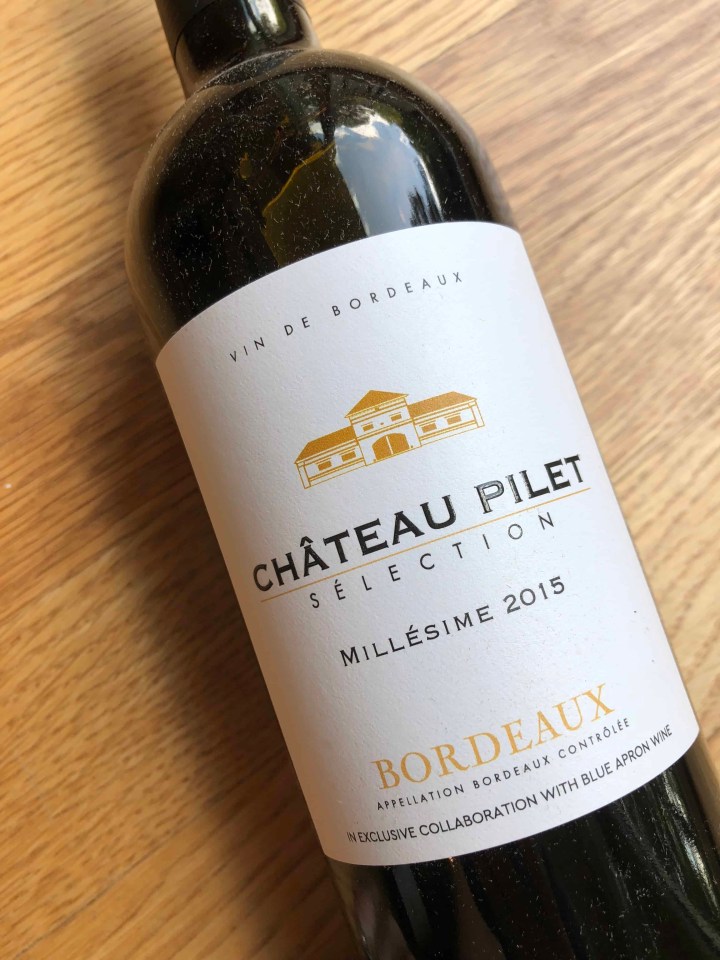
The Chateau Pilet is a mostly-Merlot blend, with some Cabernet Sauvignon and Cab Franc for balance. The wine is dark ruby in the glass with a medium-heavy body and a nose of Merlot. The Merlot flavors of dark berry lead but finish cleanly with a big tannic bite to the back. This wine is like your favorite friend who’s always ready to hang out–it will go with beef, pork, chicken, beans, or really anything short of shellfish. We had it with the Blue Apron Orange Beef, and the flavors complemented each other just fine. Cool room temperature here.

Our next red is Italian, the 2014 Rocca dei Rettori Anglianico. Anglianico is usually a heavy-hitter, with giant tannins and dense peppery flavors that benefit from aging. This bottling is designed to tread a little lighter so you can enjoy it without more agining. (Could you even properly age a 500ml bottle? I’m not sure).
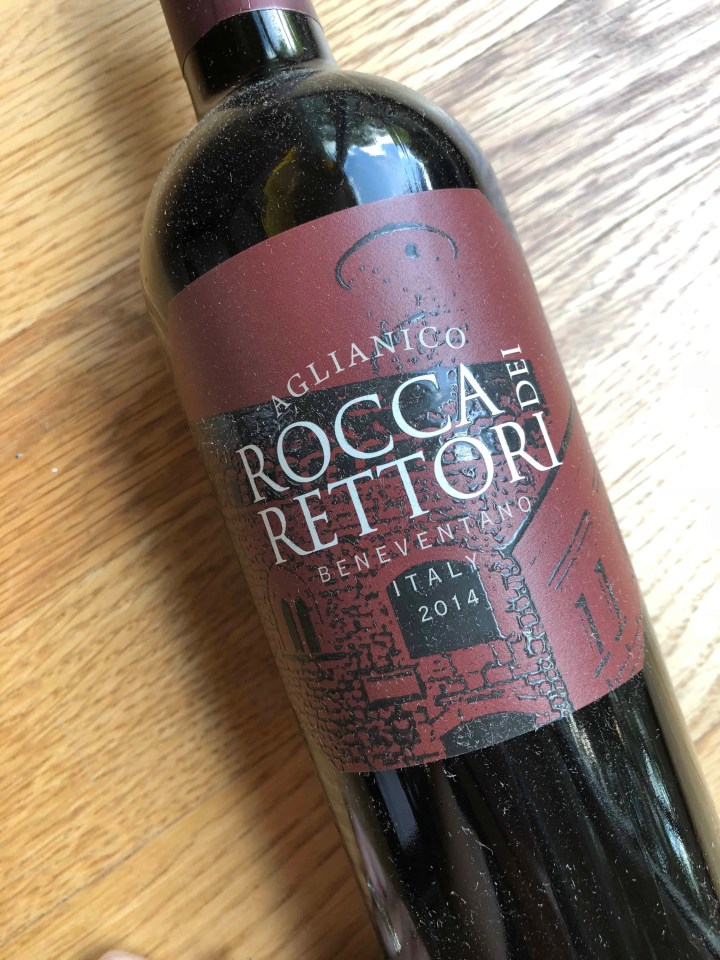
The Rocca is a medium red with a medium-heavy body and lots of nose of pepper and leather. I thought, with those odors, that the flavor would lean toward Cab, but there is a lot of fruit and acidity in the Rocca to balance it out. This was much lighter on its feet than I expected. It does have big tannins in the back, but they’re not overwhelming. This is another well-balanced wine that you could definitely serve to a friend without worrying about the quality. We had filet with this, and it was great, but an aged ribeye or even a burger would have been awesome. Cool room temperature here.
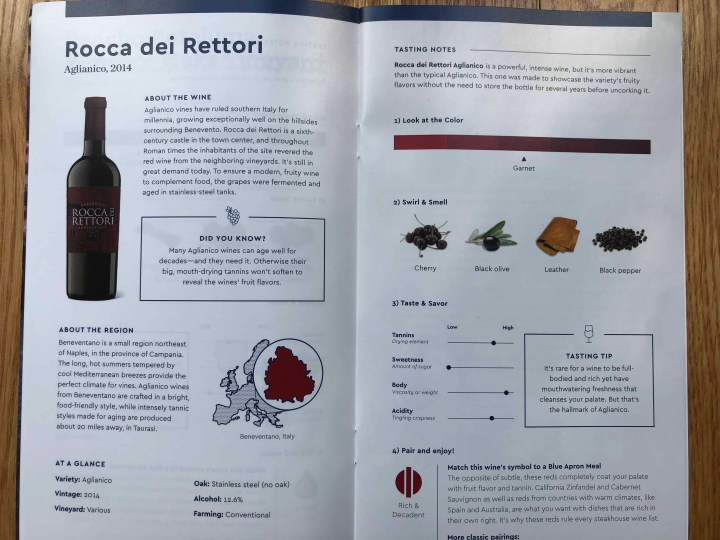
Our last wine this month is a Bay Area red blend, Lusu Cellars’ 2017 The Farmer’s Hand. As helpfully noted on the label, this wine is mostly Carignan with a splash of Mourvedre. As I’ve noted before, Carignan is a great food wine because it’s fruity and not very tannic.
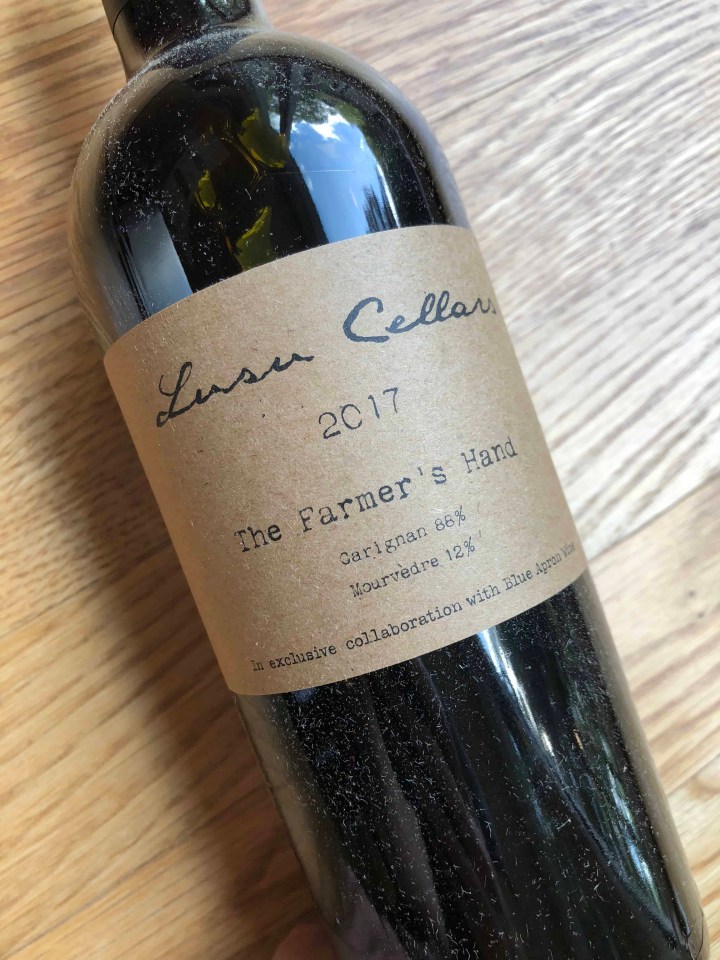
This wine is medium red, with a medium-light body and not much nose. The flavors start out fairly tart, then turn dark and jammy as the wine sits in the glass. It finishes with a bitter edge that wipes out the fruit. This was an interesting wine, and somewhat more complex than we expected from the down-home label. It definitely evolved as the wine got air and warmth. We had it with grilled chicken, and that worked pretty well. We ended unsure whether we really liked this, but we agreed that another bottle would have helped us decide! Cool room temp.
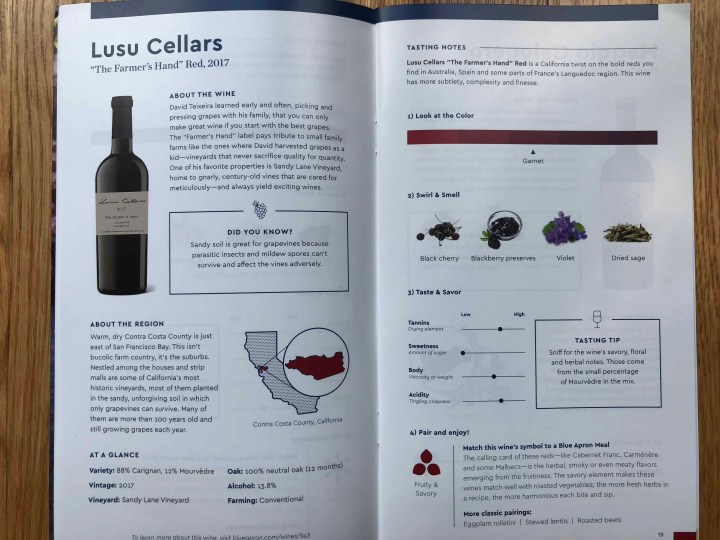
And that’s September! We had a nice box of wine with a lot of variety. And if you wanted to stage a wine tasting with all that variety, Blue Apron is here to help:
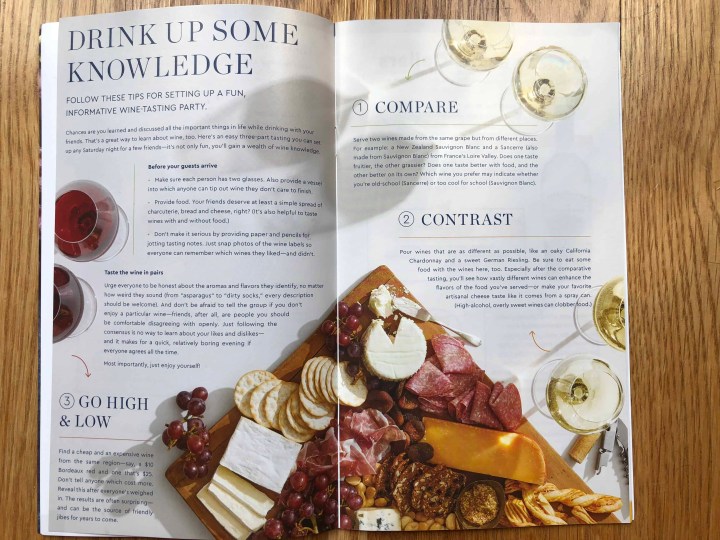
You can send me a charcuterie platter anytime, Blue Apron. Next month will start to (maybe) feel like Fall here! See you in October!
By the way, Blue Apron has an easy system for pairing its wines and its food subscriptions, somewhat like you might have seen in nicer grocery stores — the wines are categorized by type (crisp & minerally, plush & fruity, etc.) and then that symbol shows up on the food recipes. Pair any wine of the recommended type to the food, and voila — you have a great meal!
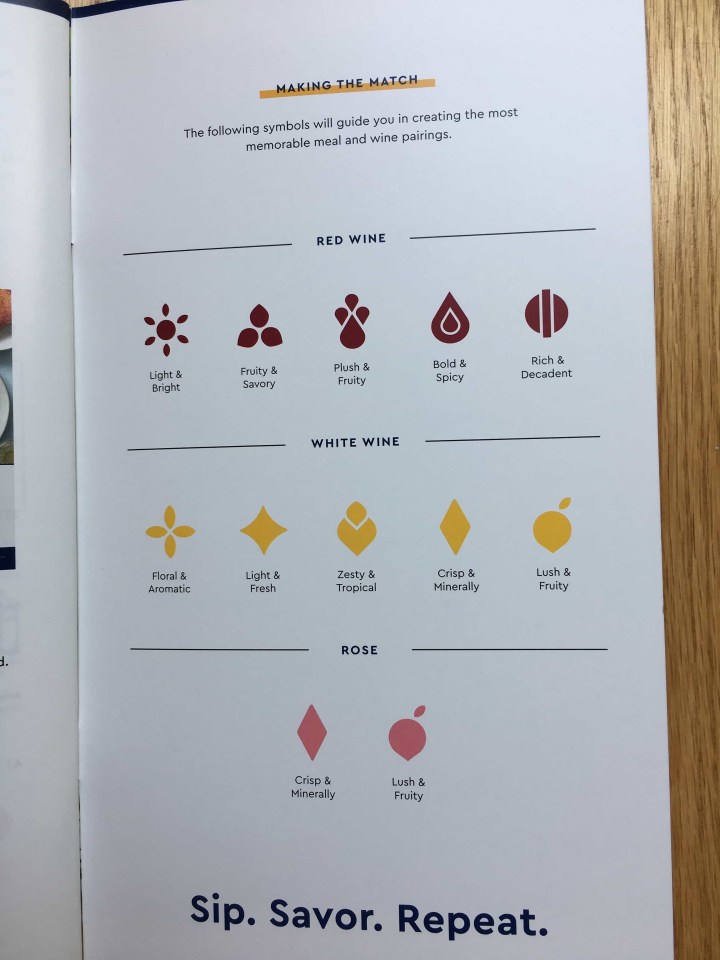
Have you tried Blue Apron Wine? Planning a wine tasting? Tell us in the comments below!




Comments